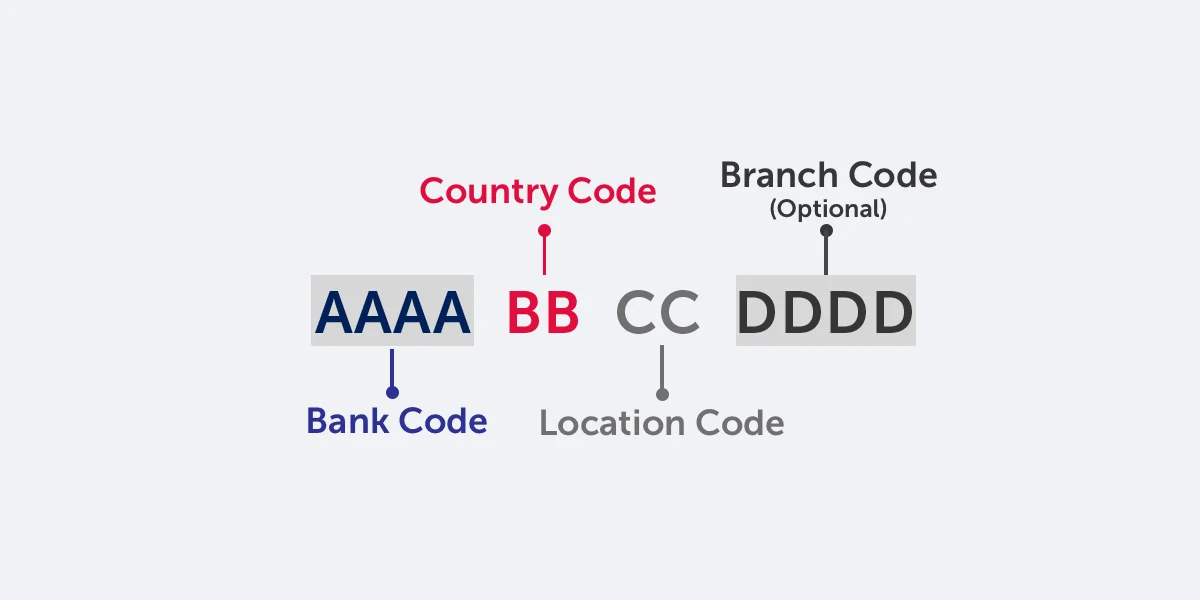Overview of International Banking
International banking is a crucial component of the global financial system, facilitating cross-border transactions and providing various banking services to individuals, corporations, and governments around the world. At its core, international banking involves the operations of banks that conduct business activities across national borders.
The global financial system acts as the foundation for international banking. It encompasses a network of financial institutions, markets, and regulatory bodies that work together to facilitate the flow of capital, investment, and trade across borders. International banks play a vital role in this system by providing a range of financial services, such as lending, foreign exchange, trade finance, wealth management, and advisory services.
There are various types of international banking institutions, including global multinational banks, regional banks, and offshore banks. These institutions leverage their global network of branches, subsidiaries, and correspondent banking relationships to meet the diverse financial needs of their clients.
International banking involves a wide range of cross-border transactions. These include trade finance activities, such as issuing letters of credit and providing export financing, as well as international remittances, foreign exchange transactions, and syndicated lending. International banks also play a pivotal role in facilitating foreign direct investment and raising capital for corporations and governments through debt and equity markets.
International banking offers numerous benefits. It provides access to a wide range of financial products and services, enables portfolio diversification, and supports economic growth and development by channeling capital to productive sectors. International banks can also help clients manage risks associated with foreign exchange fluctuations, interest rate changes, and regulatory variations across jurisdictions.
However, international banking also presents challenges. Operating across multiple jurisdictions requires international banks to comply with different regulatory frameworks, accounting standards, and tax regimes. They must also navigate political and economic uncertainties, currency risks, and cultural differences.
To regulate and supervise international banking activities, a robust regulatory framework is in place. Regulatory bodies, such as the Basel Committee on Banking Supervision, set standards and guidelines for risk management, capital adequacy, and liquidity requirements. International banks are also subject to anti-money laundering and counter-terrorism financing regulations to ensure the integrity and stability of the global financial system.
Key players in international banking include global financial institutions like JPMorgan Chase, Citigroup, HSBC, and Bank of America. These banks have a significant global presence, offering a wide range of banking services to clients in multiple countries. Additionally, regional banks and offshore financial centers, such as Switzerland, Singapore, and the Cayman Islands, play important roles in international banking.
Technology is reshaping the landscape of international banking. Digitalization has led to the emergence of fintech startups and the adoption of innovative solutions, such as mobile banking, blockchain, and artificial intelligence. These technological advancements improve efficiency, enhance risk management, and enable financial inclusion in remote and underserved areas.
Looking ahead, the future of international banking is likely to be driven by advancements in technology, evolving regulatory frameworks, and changing customer expectations. Sustainability, digitalization, and enhanced cybersecurity will be significant trends as international banks seek to adapt to new economic realities and deliver value to their clients in an ever-changing global financial landscape.
Global Financial System
The global financial system serves as the backbone of international banking, facilitating the movement of capital, investments, and financial transactions across borders. It encompasses a network of financial institutions, markets, and regulatory bodies that work together to ensure the smooth functioning of the international economy.
At the heart of the global financial system are central banks, which play a critical role in maintaining financial stability and managing the money supply within their respective jurisdictions. Central banks also act as lenders of last resort during times of financial crisis, providing liquidity to support the stability of the banking system.
International financial institutions, such as the International Monetary Fund (IMF) and the World Bank, work alongside central banks to promote global economic stability and support countries in times of financial distress. These institutions provide financial assistance, advice, and technical assistance to member countries, fostering economic growth and poverty reduction.
Financial markets are integral components of the global financial system. They provide platforms for individuals and institutions to buy and sell financial instruments, such as stocks, bonds, currencies, and commodities. Major financial centers, including New York, London, Hong Kong, and Tokyo, host these markets, attracting investors and facilitating efficient price discovery.
Market participants include institutional investors, such as pension funds and hedge funds, as well as individual investors and speculators. Trading in financial markets can occur through various channels, including traditional exchanges, electronic trading platforms, and over-the-counter (OTC) markets.
Regulation and oversight are essential to ensure the integrity and stability of the global financial system. Regulatory bodies, such as financial supervisory authorities and central banks, enforce rules and standards that govern the activities of financial institutions. These regulations aim to protect consumers, promote transparency, and mitigate systemic risks.
Within the global financial system, international banks play a crucial role. These banks operate on a global scale, with branches and subsidiaries in multiple countries. They provide a wide range of financial services to individuals, businesses, and governments, including lending, trade finance, foreign exchange, and investment banking.
The interconnectedness of the global financial system means that events in one part of the world can have ripple effects across the entire system. Financial crises, such as the Global Financial Crisis of 2008, highlighted the vulnerabilities and interdependencies within the system. Since then, efforts have been made to enhance risk management, strengthen regulation, and improve global coordination to prevent and mitigate future crises.
The global financial system is constantly evolving in response to technological advancements and changing market dynamics. Digitalization has revolutionized the way financial services are delivered, enabling the rise of fintech companies and the adoption of innovative solutions, such as mobile banking, robo-advisors, and blockchain technology.
As the global financial system continues to evolve, it faces ongoing challenges, including cyber threats, geopolitical uncertainties, and the need for greater inclusion and sustainability. Adapting to these challenges and leveraging technology to foster financial inclusion and sustainable economic development will be essential for the resilience and continued success of the global financial system and international banking.
Role of International Banks
International banks play a crucial role in the global financial system, serving as intermediaries between individuals, businesses, and governments across different countries. They provide a wide range of banking services that facilitate international trade, investment, and financial transactions.
One of the primary roles of international banks is to provide financing and credit to individuals and businesses engaged in cross-border activities. These banks offer various loan products, such as trade finance facilities, project financing, and syndicated loans, to support the growth and expansion of businesses operating on a global scale.
International banks also specialize in foreign exchange transactions, helping individuals and businesses convert one currency into another. They provide competitive exchange rates, hedging options, and market insights to assist their clients in managing currency risks and optimizing international transactions.
Trade finance is a critical function of international banks. They facilitate international trade by offering services such as letters of credit, documentary collections, and supply chain financing. These services help to mitigate the risks associated with cross-border transactions, ensuring the smooth flow of goods and services between countries.
In addition to traditional banking services, international banks also offer wealth management and private banking services to affluent individuals and families. These services include portfolio management, estate planning, tax advisory, and investment advisory. International banks leverage their global network and expertise in managing diverse asset classes to help clients achieve their financial goals.
International banks also play a pivotal role in supporting governments and corporations in raising capital. They underwrite debt and equity issuances, facilitate initial public offerings (IPOs), and provide advice on capital structure optimization. Access to international capital markets allows governments and corporations to fund infrastructure projects, expand operations, and pursue growth strategies.
Risk management is another crucial aspect of international banking. International banks employ comprehensive risk management frameworks to identify, assess, and mitigate various risks, including credit risk, market risk, operational risk, and compliance risk. By managing these risks effectively, international banks ensure the safety and soundness of their operations and maintain the trust of their clients and stakeholders.
International banks also contribute to financial inclusion by extending banking services to underserved areas and populations. Through their digital banking platforms and mobile applications, international banks enable individuals in remote locations to access basic banking services, make payments, and conduct financial transactions.
Furthermore, international banks actively participate in corporate social responsibility initiatives, supporting community development projects, environmental sustainability, and social impact programs. They strive to make a positive difference in the communities where they operate, aligning their operations with the principles of sustainability, responsible lending, and ethical business practices.
In summary, international banks play a multifaceted role in the global financial system. They provide crucial financial services, facilitate cross-border transactions, support economic development, manage risks, and contribute to financial inclusion and sustainability. International banks are key drivers of international trade, investment, and economic growth, connecting the world’s economies and fostering global prosperity.
Types of International Banking
International banking encompasses various types of institutions and activities that cater to the diverse needs of individuals, businesses, and governments engaged in cross-border transactions. Understanding the different types of international banking is key to navigating the complexities of the global financial system.
1. Commercial Banks: Commercial banks are the most commonly known type of international banks. They offer a wide range of banking services, including deposit accounts, loans, trade finance, and foreign exchange. Commercial banks have a significant global presence, with branch networks and correspondent banking relationships worldwide.
2. Investment Banks: Investment banks primarily focus on providing corporate finance and advisory services. They assist businesses in raising capital through debt and equity markets, facilitate mergers and acquisitions, and offer strategic advice on financial transactions. Investment banks also engage in trading activities, such as buying and selling securities on behalf of clients and for their own profit.
3. Private Banks: Private banks cater to high-net-worth individuals and families, providing personalized wealth management and private banking services. These banks offer tailored investment solutions, estate planning advice, and asset protection services. Private banks typically have a global footprint, allowing them to serve clients with diverse international interests.
4. Retail Banks: Retail banks focus on providing banking services to individual customers. While their activities may be primarily domestic, many retail banks have expanded their operations internationally to cater to customers with global banking needs. Retail banks offer services such as savings accounts, personal loans, mortgages, and credit cards to individuals residing or conducting business abroad.
5. Correspondent Banks: Correspondent banks serve as intermediaries for other banks in cross-border transactions. They facilitate international wire transfers, provide foreign currency services, and offer access to local banking systems. Correspondent banking relationships enable smaller banks to access services and markets beyond their own capabilities.
6. Offshore Banks: Offshore banks operate in jurisdictions with favorable regulations and tax environments. These banks provide services to non-resident individuals and international businesses, offering privacy, asset protection, and tax planning benefits. Offshore banks are commonly located in countries such as Switzerland, the Cayman Islands, and Singapore.
7. Development Banks: Development banks focus on promoting economic development in emerging and developing countries. They provide long-term financing for infrastructure projects, support small and medium-sized enterprises, and offer technical assistance and capacity-building programs. Development banks play a vital role in fostering sustainable economic growth and reducing poverty.
8. Digital Banks: Digital banks, also known as neobanks or virtual banks, operate exclusively online without physical branches. These banks emphasize convenience, accessibility, and cost-effectiveness, offering digital payment solutions, mobile banking apps, and streamlined account opening processes. Digital banks have gained popularity due to their user-friendly interfaces and competitive offerings.
It’s important to note that many international banks may offer a combination of these services, catering to a diverse range of clients and needs. The type of international bank chosen often depends on factors such as the nature of the financial transaction, geographic coverage, regulatory considerations, and the specific requirements of the client.
In summary, the various types of international banking institutions serve different purposes and address the specific financial needs of individuals, businesses, and governments operating in a globalized economy. A deep understanding of these types can help individuals and organizations make informed decisions when choosing an international banking partner.
Cross-Border Banking Transactions
Cross-border banking transactions are a vital component of international banking, enabling individuals, businesses, and governments to conduct financial activities across different countries and currencies. These transactions involve the movement of funds, trade finance, foreign exchange, and investment activities on a global scale.
One of the most common types of cross-border banking transactions is international remittances. Individuals working in foreign countries often send money back to their home countries to support their families or invest in local businesses. International banks facilitate these transfers, ensuring the safe and efficient movement of funds across borders.
Another significant cross-border transaction is trade finance. International banks provide trade finance services to support the import and export of goods and services. This includes issuing letters of credit, providing financing for trade transactions, and offering services such as export factoring and supply chain financing. By mitigating the risks associated with cross-border trade, international banks play a crucial role in facilitating global commerce.
Foreign exchange transactions are an integral part of cross-border banking. International banks offer competitive exchange rates and provide foreign currency services to individuals and businesses. They enable currency conversion, hedging options, and guidance on managing currency risks. These services are essential for multinational corporations engaging in international trade and investors seeking exposure to different currencies.
Cross-border banking also extends to investment activities. International banks help individuals and institutional investors access global financial markets and invest in various asset classes. They enable the purchase of international stocks, bonds, and other securities, providing custody services and facilitating settlement and clearance processes.
Furthermore, cross-border banking transactions include syndicated lending, where multiple banks collaborate to provide financing to corporations or governments. This type of lending allows international banks to pool their resources and expertise to support large-scale projects or meet substantial funding requirements.
Risk management is a critical component of cross-border banking transactions. International banks employ robust risk management frameworks to evaluate and mitigate risks associated with these transactions. These risks include credit risk, market risk, liquidity risk, legal and regulatory risk, and operational risk. By effectively managing these risks, international banks ensure the smooth execution of cross-border transactions and safeguard the interests of their clients.
Regulatory compliance is a key consideration in cross-border banking transactions. International banks must adhere to regulations and guidelines set forth by both the home country and the host country where the transaction occurs. Compliance with anti-money laundering, know-your-customer, and sanctions regulations is of utmost importance to maintain the integrity and security of the global financial system.
Technological advancements have significantly impacted cross-border banking transactions. Digitalization has streamlined processes, improved efficiency, and reduced costs associated with international payments and trade finance. Online banking platforms, mobile banking apps, and blockchain technology have enhanced transparency, speed, and security in cross-border transactions.
In summary, cross-border banking transactions form the backbone of international banking. They encompass a wide range of activities, including remittances, trade finance, foreign exchange, and investment activities. International banks facilitate these transactions, managing risks and adhering to regulatory requirements. As technology continues to advance, cross-border banking transactions are becoming more seamless, efficient, and accessible, contributing to the growth and interconnectedness of the global economy.
Benefits and Challenges of International Banking
International banking offers numerous benefits for individuals, businesses, and governments, but it also presents unique challenges that must be navigated. Understanding both the benefits and challenges is essential for effectively engaging in international banking activities.
One of the primary benefits of international banking is access to a wide range of financial products and services. International banks provide diverse offerings, including loans, trade finance, foreign exchange, wealth management, and investment banking. This access to various financial solutions enables individuals and businesses to meet their specific needs and pursue opportunities in the global marketplace.
International banking also allows for portfolio diversification. By investing in assets across different countries and currencies, individuals and businesses can spread their risk and potentially achieve higher returns. This diversification helps protect against regional economic downturns and currency fluctuations, providing stability and potential growth opportunities.
Moreover, international banking supports economic growth and development. By facilitating cross-border transactions and providing funding for infrastructure projects, international banks contribute to job creation, increased productivity, and improved living standards. They play a crucial role in channeling capital to emerging economies, fostering economic growth, and reducing poverty.
International banks help clients manage risks associated with foreign exchange fluctuations, interest rate changes, and regulatory variations across jurisdictions. They offer hedging instruments, risk management strategies, and expert advice to mitigate these risks. This risk management capability provides stability and safeguards the financial interests of individuals, businesses, and governments engaged in international activities.
Despite the benefits, international banking also comes with challenges. Operating across multiple jurisdictions requires international banks to comply with different regulatory frameworks, accounting standards, and tax regimes. They must navigate complex legal and regulatory landscapes, which can vary significantly from one country to another. This increased compliance burden adds costs and administrative complexities to international banking operations.
Political and economic uncertainties pose additional challenges. Changes in government policies, trade disputes, and regulatory changes can create volatility and impact the operating environment for international banks. They must closely monitor geopolitical risks and economic trends to make informed decisions and mitigate potential disruptions to their operations.
Cultural differences and language barriers can also be challenging in international banking. Global banks must adapt their services and communication to cater to diverse cultures and languages. Understanding local customs, practices, and business etiquette is crucial for building strong relationships and delivering exceptional customer service.
Technological advancements present both benefits and challenges in international banking. On one hand, digitalization has improved efficiency, enhanced customer experience, and enabled greater accessibility to financial services. On the other hand, technological innovation brings cybersecurity risks, as hackers and cybercriminals become increasingly sophisticated. International banks must invest in robust cybersecurity measures to protect sensitive data and maintain the trust of their clients.
In summary, international banking offers diverse benefits, including access to financial products and services, portfolio diversification, and support for economic growth. However, it also poses challenges related to regulatory compliance, political and economic uncertainties, cultural differences, and cybersecurity risks. International banks must navigate these challenges effectively to capitalize on the benefits and deliver value to their clients in an increasingly interconnected global financial landscape.
Regulatory Framework for International Banks
The regulatory framework for international banks is a critical aspect of ensuring the integrity, stability, and soundness of the global financial system. International banks operate in multiple jurisdictions and are subject to a comprehensive set of regulations, guidelines, and supervisory requirements.
At the international level, the Basel Committee on Banking Supervision (BCBS) plays a central role in setting global standards for banking regulation. The Basel Accords, comprising Basel I, Basel II, and Basel III, provide a framework of guidelines and principles for risk management, capital adequacy, and liquidity requirements. These accords aim to enhance the resilience of banks and promote financial stability by ensuring that banks maintain sufficient capital buffers to withstand adverse shocks.
Regulatory requirements for international banks also vary at the national level. Each country has its own financial regulatory bodies that oversee banking activities and enforce regulations specific to their jurisdiction. These regulatory bodies are responsible for granting licenses, conducting inspections, and supervising the operations of international banks within their borders.
Anti-money laundering (AML) and counter-terrorism financing (CTF) regulations are also crucial in the regulatory framework for international banks. These regulations are designed to prevent illicit activities, such as money laundering and terrorist financing, by imposing customer due diligence requirements, transaction monitoring, and reporting obligations. International banks are obligated to establish robust AML/CTF programs and comply with these regulations to maintain the integrity of the global financial system.
Capital adequacy is a fundamental aspect of banking regulation. International banks are required to maintain a certain level of capital to absorb potential losses and protect depositors and other stakeholders. The capital adequacy requirements are usually expressed as a capital adequacy ratio, such as the Basel III minimum capital adequacy ratio, which sets a minimum level of capital as a percentage of a bank’s risk-weighted assets.
Liquidity risk management is another important component of the regulatory framework for international banks. Banks are required to maintain sufficient liquidity to meet their obligations and withstand short-term funding disruptions. Regulatory bodies impose liquidity standards and reporting requirements to ensure that banks have appropriate liquidity risk management systems in place.
Regulatory frameworks also cover corporate governance and risk management practices. International banks are expected to have robust governance structures, sound risk management frameworks, and effective internal control systems. These measures aim to enhance transparency, accountability, and the prudent management of risks within international banks.
Compliance with regulatory requirements is closely monitored through regular inspections, audits, and reporting. Regulatory bodies have the authority to impose sanctions, penalties, or even revoke the license of international banks found to be non-compliant with the regulations. Compliance departments within international banks play a crucial role in ensuring adherence to the regulatory framework and are responsible for implementing policies, procedures, and controls to enforce compliance.
The regulatory landscape for international banks is subject to ongoing discussions and updates. Regulatory bodies continuously assess and adapt the regulatory framework to address emerging risks, technological advancements, and market developments. This dynamic nature of regulation highlights the need for international banks to remain vigilant, proactive, and adaptable to regulatory changes.
In summary, the regulatory framework for international banks is a complex and comprehensive system that encompasses global and national regulations, capital adequacy requirements, liquidity standards, AML/CTF obligations, and governance and risk management practices. Compliance with these regulations is essential to maintain the stability, integrity, and trust in the global financial system.
Key Players in International Banking
International banking is a highly competitive industry, with several key players dominating the global financial landscape. These institutions have a significant global presence and offer a wide range of financial services to clients in multiple countries. Understanding the key players in international banking is essential for assessing the market dynamics and identifying potential banking partners.
1. JPMorgan Chase: JPMorgan Chase is one of the largest financial institutions in the world, with operations spanning more than 100 countries. The bank offers a comprehensive suite of financial services, including commercial banking, investment banking, asset management, and private banking. JPMorgan Chase’s global network and expertise make it a prominent player in international banking.
2. Citigroup: Citigroup is a leading global financial services institution, operating in more than 100 countries. The bank provides a broad range of banking products and services, including consumer banking, corporate banking, investment banking, and wealth management. Citigroup’s extensive global presence and diverse offerings position it as a key player in international banking.
3. HSBC: HSBC, headquartered in London, is one of the largest banking and financial services organizations globally. The bank operates in over 60 countries and offers a wide range of services, including commercial banking, global markets, wealth management, and private banking. HSBC’s extensive international network and focus on emerging markets make it a prominent player in international banking.
4. Bank of America: Bank of America is a major multinational banking and financial services corporation. With operations in more than 35 countries, the bank provides a comprehensive range of banking services, including consumer banking, corporate banking, investment banking, and wealth management. Bank of America’s global reach and diversified offerings solidify its position as a key player in international banking.
5. Standard Chartered: Standard Chartered is a British multinational banking and financial services company with a strong presence in Asia, Africa, and the Middle East. The bank offers services such as personal banking, corporate banking, and private banking. Standard Chartered’s deep roots in emerging markets and its focus on facilitating international trade positions it as a significant player in international banking.
6. Deutsche Bank: Deutsche Bank, headquartered in Germany, is a leading global investment bank with a wide range of financial services. The bank operates in more than 70 countries and offers services such as corporate banking, investment banking, and asset management. Deutsche Bank’s global presence and expertise in corporate finance make it a key player in international banking.
7. Barclays: Barclays is a British multinational investment bank and financial services company. With operations in over 40 countries, the bank offers services such as corporate banking, investment banking, and wealth management. Barclays’ global reach and expertise in investment banking position it as a significant player in international banking.
8. BNP Paribas: BNP Paribas is a leading European bank with a strong international presence. The bank operates in more than 70 countries and offers services such as retail banking, corporate banking, and investment solutions. BNP Paribas’ extensive network and focus on sustainability make it a prominent player in international banking.
These are just a few examples of the key players in international banking. There are many other global financial institutions and regional banks that contribute to the dynamic and competitive landscape of international banking.
In summary, the key players in international banking are multinational financial institutions with extensive global networks and diverse offerings. These institutions provide a wide range of financial services across multiple countries, serving the banking needs of individuals, businesses, and governments engaged in cross-border activities.
Impact of Technology on International Banking
The rapid advancement of technology has had a profound impact on the landscape of international banking. Technological innovations have transformed the way banking services are delivered, enhancing efficiency, accessibility, and security. The impact of technology on international banking can be seen across various aspects of the industry.
One of the most significant impacts of technology is the emergence of digital banking. Online banking platforms and mobile applications have revolutionized the way individuals and businesses interact with their banks. Customers can conveniently access their accounts, make payments, transfer funds, and engage in other banking activities from the comfort of their homes or on the go.
Technology has also improved efficiency in cross-border transactions. International money transfers that previously took days or even weeks can now be completed within minutes. Digital payment systems and blockchain technology enable faster, secure, and cost-effective remittances and cross-border payments, facilitating global commerce and improving financial inclusion.
Artificial intelligence (AI) and machine learning have also made significant contributions to international banking. Automated chatbots assist customers with inquiries, reducing the need for human intervention. AI algorithms analyze vast amounts of data to identify patterns, detect fraudulent transactions, and improve risk management. Machine learning algorithms also enable personalized financial recommendations, enhancing customer experience and satisfaction.
The use of big data analytics has revolutionized customer insights and risk assessment in international banking. Banks can harness the power of data to gain a deeper understanding of customer behavior, preferences, and needs. This information allows for targeted marketing efforts, personalized product offerings, and the development of risk models that improve credit assessments and assist in making informed business decisions.
Cloud computing has transformed infrastructure and data management in international banking. Banks can now securely store and process vast amounts of data in the cloud, eliminating the need for extensive on-premises infrastructure. Cloud-based solutions enable scalability, flexibility, and cost savings, allowing international banks to adapt to changing business demands and leverage the benefits of economies of scale.
Technological advancements have also enhanced cybersecurity measures in international banking. As the digital landscape continues to evolve, banks have strengthened their defenses against cyber threats. Robust encryption methods, multi-factor authentication, biometric identification, and artificial intelligence-powered security systems help protect customer data and prevent unauthorized access to accounts.
Moreover, technology has facilitated financial inclusion by expanding access to banking services in underserved areas. Mobile banking and digital wallets allow individuals in remote locations to access basic financial services and make payments. The convenience and affordability of such technologies provide opportunities for previously unbanked or underbanked individuals to participate in the formal financial system.
The impact of technology on international banking goes beyond customer-facing solutions. Banks are increasingly adopting automation and digitization in their back-office processes, such as account reconciliation, transaction processing, and regulatory reporting. These efficiencies improve operational effectiveness, reduce costs, and enhance overall productivity.
In summary, technology has had a transformative impact on international banking. The digitization of banking services, along with advancements in AI, big data analytics, cloud computing, and cybersecurity, has revolutionized the industry. These technological advancements have improved efficiency, accessibility, security, customer experience, and operational effectiveness in international banking.
Future Trends in International Banking
The ever-evolving landscape of international banking continues to be shaped by emerging trends and developments. As technology advances and customer expectations evolve, international banks must adapt to stay competitive and meet the changing needs of their diverse clientele. Several future trends are likely to have a significant impact on the international banking industry.
1. Digitalization: The trend towards digitalization is set to continue as technology becomes increasingly embedded in the fabric of international banking. Digital banking platforms, mobile banking apps, and virtual assistants will become more sophisticated and user-friendly, providing customers with seamless and personalized experiences. The integration of AI, machine learning, and big data analytics will enable banks to gain valuable customer insights, develop targeted products and services, and enhance risk management.
2. Open Banking: Open banking, spurred by regulatory initiatives such as the European Union’s PSD2, will foster greater collaboration and innovation in the international banking sector. It allows customers to securely share their financial data with authorized third-party providers. This trend will enable customers to access a broader range of financial services and allow international banks to partner with fintech startups, creating a more connected and inclusive ecosystem.
3. Sustainable Finance: Environmental, social, and governance (ESG) considerations are increasingly important for customers and investors. International banks are expected to play a crucial role in promoting sustainable finance by financing projects that have a positive social and environmental impact. This trend will require banks to develop sustainable lending and investment strategies, aligning their operations with ESG principles and supporting the global transition to a more sustainable economy.
4. Enhanced Cybersecurity: With the rise of cyber threats, banks will continue to invest in innovative cybersecurity solutions to protect customer data and safeguard the global financial system. The use of advanced encryption technologies, biometric authentication, and AI-powered security systems will become standard practices to combat evolving cyber risks and ensure the trust and confidence of customers.
5. Embracing Smart Contracts and Blockchain Technology: Blockchain technology has the potential to revolutionize various aspects of international banking. Smart contracts, enabled by blockchain, have the potential to streamline and automate complex financial processes, such as cross-border payments and trade finance. International banks will increasingly explore the use of blockchain technology to enhance efficiency, transparency, and security in their operations.
6. Emphasis on Financial Inclusion: Financial inclusion will remain a priority for international banks. They will continue to leverage technology to provide banking services to underserved populations and remote areas. Mobile banking, digital payment solutions, and other innovative tools will be used to bridge the financial access gap, empowering individuals and businesses to participate in the global economy.
7. Collaboration with Fintech Startups: International banks will increasingly collaborate with fintech startups to leverage their expertise and innovative solutions. Partnerships and investments in fintech companies will enhance banks’ ability to deliver innovative products and services, streamline processes, and meet the evolving needs of digitally-savvy customers.
8. Regulatory Adaptation: International banks must adapt to evolving regulatory environments. Collaborative efforts between regulators and banks will be necessary to strike a balance between ensuring financial stability, customer protection, and fostering innovation. Regulatory sandboxes and agile approaches to compliance will help international banks navigate the changing regulatory landscape.
In summary, international banking is witnessing a transformative shift driven by digitalization, sustainable finance, open banking, enhanced cybersecurity, blockchain technology, financial inclusion, collaboration with fintech startups, and regulatory adaptation. Adapting to these future trends will be essential for international banks to remain competitive, build customer trust, and contribute to a resilient and sustainable global financial system.

























